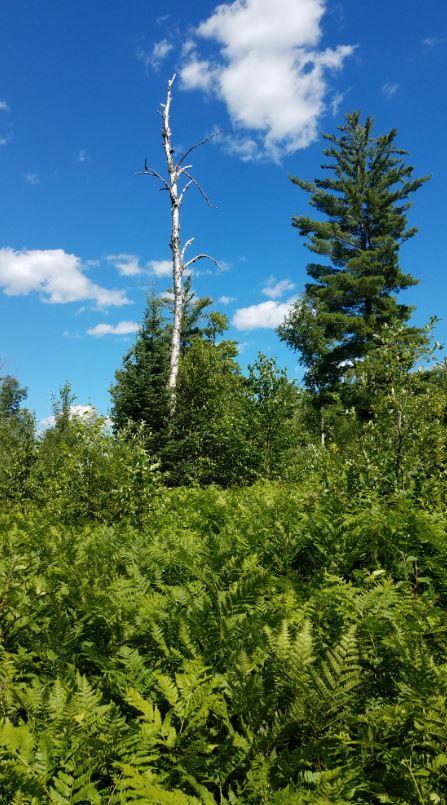Overview
In 2008, a stand of fire origin between the ages of 70 – 75 was harvested. No site prep was conducted. Aspen, paper birch, balsam fir, black/white spruce, and tamarack were removed while reserving several different species as seed trees (pine, maple, cedar, and ash). The goal was to use the treatment to create stress through sudden exposure in order to have the residual birch trees produce a bumper crop of seeds to impede the stand’s decline. Paper birch, as of spring 2018, is the most abundant species with 1,067 trees per acre.
Silviculture Objective(s)
Favor paper birch to help with birch decline with the intention of natural regeneration through suckering and seeding.
Use the natural system to set the stand up to progress on its own.
Pre-treatment stand description and condition
Stand establishment and management history:
Stand originated from fire around approximately 1935.
Pre-treatment species composition:
Birch dominated stand with pockets of aspen. There is also the presence of balsam fir, spruce, tamarack, maple, and Norway Pine in smaller amounts.
Pre-treatment forest health issues:
Birch decline.
Some concern for Hypoxylon.
Landowner objectives/situation:
Protect and manage the trees, woodlands, and forests entrusted to the DNR for the benefit of the people of Minnesota.
Silviculture Prescription
Harvest all unmarked aspen, paper birch, balsam fir, black spruce, white spruce, and tamarack found within the stand. Pine, cedar, maple, and ash species will be retained as seed trees. Roughly 3 to 4 paper birch trees per acre will be marked with yellow paint and are to be retained as seed trees. Six tamarack trees per acre are to be retained on 10 acres located on the west side.
Full tree skidding is required for scarification purposes.
Natural regeneration through seeding and suckering.
All snags are to be reserved unless deemed dangerous.
Slash is to be kept on site and used to create water bars to limit erosion. Slash will also be retained for nutritional concerns regarding calcium. There needs to be at least 5 sound downed logs greater than 6 inches in diameter and 6 feet in length per acre. Slash will also be retained for nutritional concerns regarding calcium. Slash is to be lopped and scattered evenly over site to within 2 feet of the ground.
The appraisal for the timber sale yielded the following numbers (Table 1) for volume to be harvested. The mixed spruce was 50% black spruce and 50% white spruce. Aspen contains less than 10% Balm of Gilead.
Table 1: timber sale appraisal.
| Species | Quantity (Cds) |
| Paper Birch | 650.0 |
| Trembling Aspen | 225.0 |
| Mixed Spruce | 150.0 |
| Balsam Fir | 90.0 |
| Tamarack | 60.0 |
What actually happened during the treatment
Stand was harvested according to plan during May-June in the summer of 2008.
Post-treatment assessment
A regeneration survey was conducted in spring 2018, 9 years post-harvest. Regeneration results can be seen below in Table 2.
Table 2: Regeneration survey 9 years after the treatment was implemented.
|
Species |
Trees per Acre | Stocking Percent |
| Paper Birch | 1067 | 94% |
| Aspen | 233 | 78% |
| Balsam Fir | 189 | 44% |
| Red Maple | 127 | 50% |
| White Pine | 44 | 39% |
| White Spruce | 27 | 22% |
The majority of the birch leave trees have perished since the harvest. This is not considered a problem as the status of the birch trees at the time of harvest was declining. The sudden stress from the harvest allowed the trees to produce one last good crop of seeds before expiring.
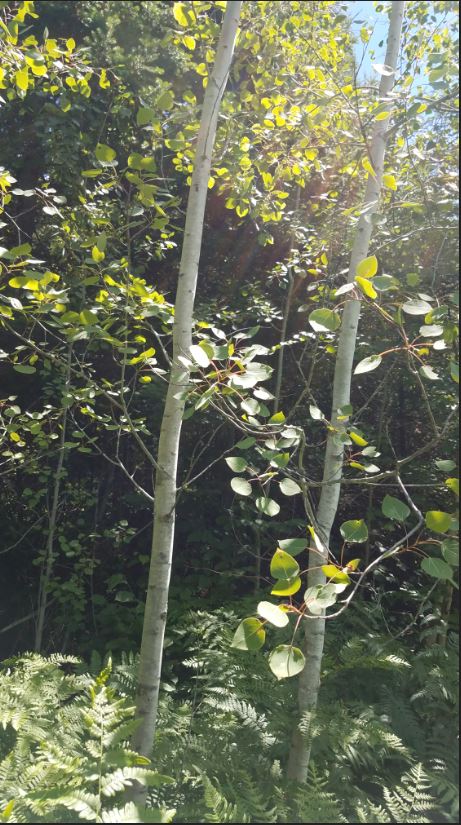
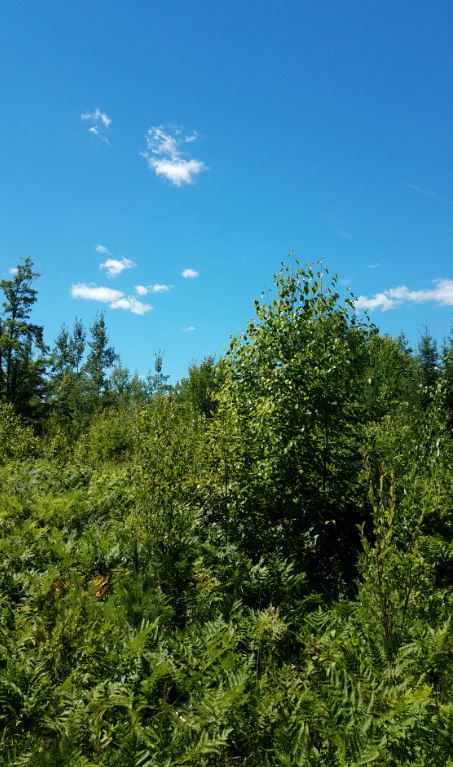
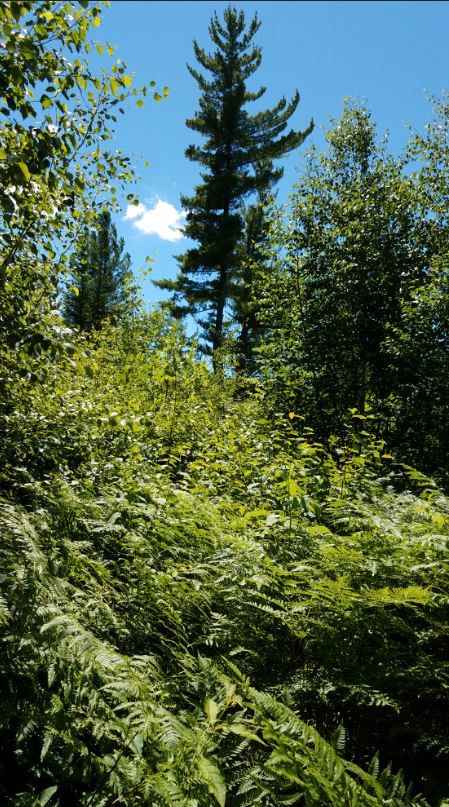
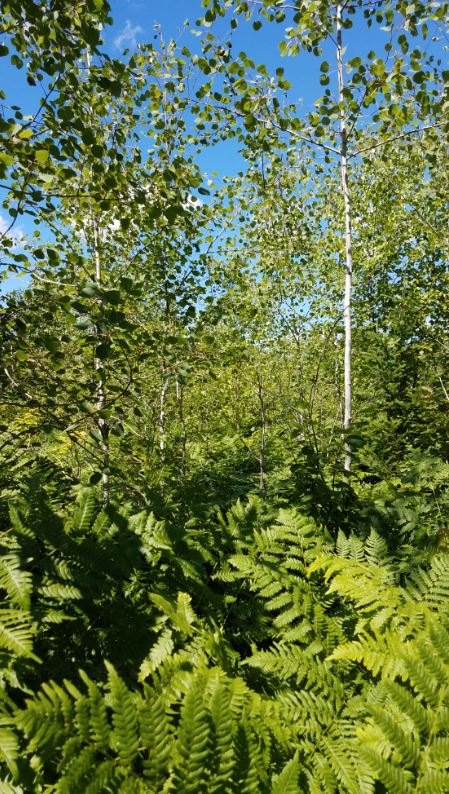
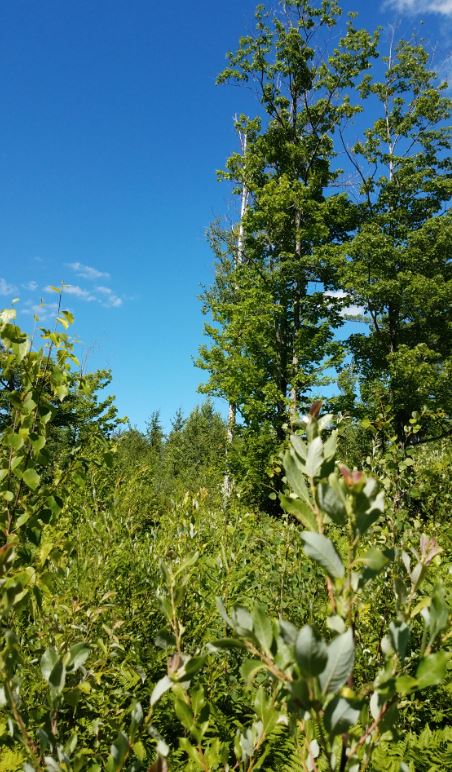
Figures 1-5: Current composition of the stand as of 2018.
Plans for future treatments
No immediate management action is scheduled as the goal is to allow the stand to develop naturally.
TSI (Timber Stand Improvement) may be considered based on future assessments.
Costs and economic considerations
TSI is considered an option as it can help promote stronger straighter growth of the birch, making the future timber more valuable. In most cases, the DNR will receive payment for this intermediate treatment due to the market for birch when its bark becomes white (roughly four growing seasons).
Other notes
The topography in this area is variable but was not considered a limiting factor.
Summary / lessons learned / additional thoughts
As of the summer of 2018, the results of the stand have met the forester’s expectations. The stand is functioning productively and requires little intervention from management. Healthy paper birch is a main component of the site which was a major goal of the silviculture prescription.
